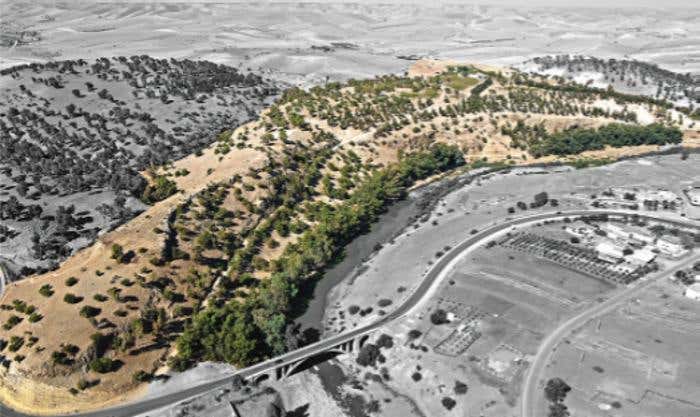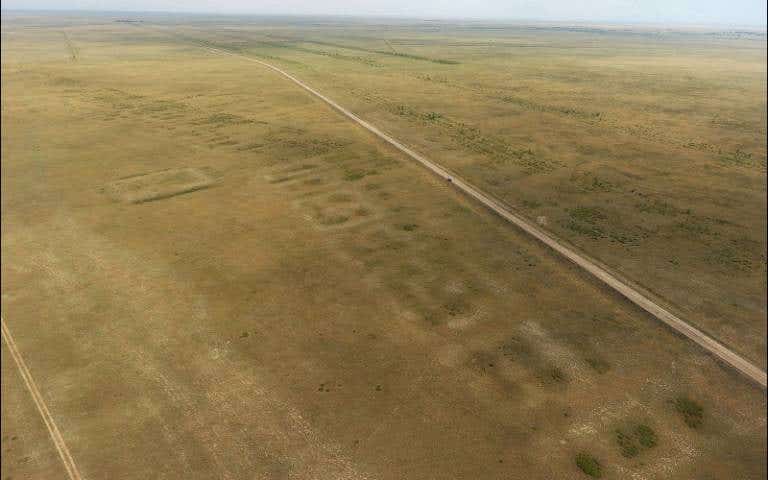Breakthrough discovery changes Mediterranean and African history
Though the Palaeolithic and historic eras is well-known, the region’s prehistoric role between 4000 and 1000 BC has remained largely unclear.

Archaeological discoveries at Oued Beht reveal Africa’s largest prehistoric farming settlement, challenging assumptions about the Maghreb’s historical role. (CREDIT: Toby Wilkinson)
The Maghreb, where the Sahara meets the Mediterranean, has always been more than a borderland. With its strategic location near Europe and climate suited for settlement, it has served as a key passage between continents and cultures for thousands of years.
Though its importance during the Palaeolithic and historic eras is well-known, the region’s prehistoric role between 4000 and 1000 BC has remained largely unclear. Now, new archaeological work in Morocco is beginning to fill that gap and change what we know about its place in African and Mediterranean history.
Recent excavations at Oued Beht have revealed signs of a highly developed farming society dating back to around 3400–2900 BC. This research, published in Antiquity, is the result of a collaboration between INSAP, the University of Cambridge, and Italy’s CNR-ISPC.
The site contains Africa’s oldest and largest known agricultural complex outside the Nile Valley. Archaeologists uncovered domesticated crops and livestock, along with decorated pottery and carefully crafted stone tools. Deep storage pits—carved into the earth—suggest this was a society planning for long-term survival.
“For over thirty years, I have been convinced that Mediterranean archaeology has been missing something fundamental in later prehistoric North Africa,” said Professor Cyprian Broodbank. “Now, at last, we know that was right, and we can begin to think in new ways that acknowledge the dynamic contribution of Africans to the emergence and interactions of early Mediterranean societies.”
Roughly the size of Early Bronze Age Troy, the Oued Beht settlement reveals a thriving, organized community. Located in the north-west Maghreb, its favorable climate—shaped by both Atlantic and Mediterranean influences—helped sustain farming, even as much of northern Africa became more arid.
The site’s success likely came from smart environmental strategies. Evidence points to irrigation systems and crop rotation techniques that boosted productivity and supported growing populations. This kind of agricultural planning shows a level of complexity once thought absent from the region during this time.
Links between Oued Beht and southern Iberia are becoming harder to ignore. Archaeologists in Iberia have found similar deep storage pits and material culture, including ivory and ostrich eggshells. These finds suggest strong trade and cultural exchange across the Strait of Gibraltar during the Copper Age.
Related Stories
Genetic analyses bolster these connections, revealing a mixed ancestry of local hunter-gatherers, Neolithic Iberian farmers, and Saharan pastoralists in the region’s population. Notably, an individual of African descent was identified at the Late Copper Age Beaker period site of Camino de las Yeseras in Iberia.
This genetic diversity highlights the Maghreb’s role as a nexus of cultural and biological exchange. It also emphasizes the importance of migratory patterns and intermarriage in shaping the genetic landscape of early Mediterranean societies.
Dr. Giulio Lucarini emphasized the site’s significance: “Oued Beht affirms the central role of the Maghreb in the emergence of both Mediterranean and wider African societies. Our discoveries prove that this gap in knowledge stems not from a lack of activity, but from the relative lack of investigation and publishing.”
Beyond trade, these connections likely included shared religious or ritualistic practices, as suggested by the discovery of symbolic artifacts such as decorated pottery and carved stone figures. These findings hint at a cultural dialogue that extended beyond economic exchanges, influencing artistic and ceremonial traditions across the region.
The Maghreb’s strategic location between Europe and Africa positioned it as a vital hub for prehistoric societies. Archaeological evidence from the region indicates far-reaching interactions during the fourth and third millennia BC. Pottery and metalwork resembling south-west European Beaker types have been uncovered alongside African ivory and other trade goods.
The integration of local farming traditions with Mediterranean influences underscores the complexity of these communities. Scholars have identified parallels between the Maghreb and contemporaneous societies in the Levant, Aegean, and Central Mediterranean, suggesting a shared network of cultural and technological exchange.
Despite the lack of comprehensive data from the period, these findings highlight the region’s active participation in shaping early Mediterranean civilizations.
Moreover, the Maghreb appears to have played a crucial role in the transmission of technologies such as metallurgy and seafaring. Artifacts from Oued Beht suggest the use of early metal tools, including copper and bronze items, which could have facilitated agricultural and construction activities.
This technological innovation likely contributed to the community’s economic and social complexity, enabling it to engage more effectively with neighboring regions.
For centuries, the Maghreb’s later prehistoric contributions have been underestimated. The multidisciplinary efforts at Oued Beht challenge this narrative, offering a clearer picture of its significance. The research team’s work demonstrates that north-west Africa was not a passive periphery but an integral part of the Mediterranean’s dynamic social and economic systems.
As the authors of the study published in Antiquity noted, “It is crucial to consider Oued Beht within a wider co-evolving and connective framework embracing peoples on both sides of the Mediterranean-Atlantic gateway during the later fourth and third millennia BC… recognizing it as a distinctively African-based community that contributed substantially to the shaping of that social world.”
This groundbreaking research not only illuminates the Maghreb’s role in prehistoric developments but also invites further exploration. With new techniques and a renewed focus on underexplored sites, the region’s full historical significance may finally come to light. The findings at Oued Beht serve as a powerful reminder of Africa’s pivotal role in the interconnected history of human civilization.
Future studies could expand on this work by examining additional sites across the Maghreb, employing advanced dating techniques and environmental analysis to reconstruct climatic conditions and human responses. Such research would deepen our understanding of how prehistoric societies adapted to environmental challenges and leveraged their geographic advantages.
By shedding light on the Maghreb’s dynamic past, these discoveries challenge Eurocentric historical models and highlight the interconnectedness of ancient civilizations. They underscore the importance of Africa’s contributions to the broader tapestry of human history, urging a more inclusive approach to archaeological and historical scholarship.
Note: Materials provided above by The Brighter Side of News. Content may be edited for style and length.
Like these kind of feel good stories? Get The Brighter Side of News' newsletter.



